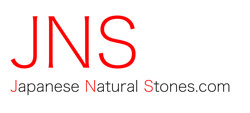I’ve always been against using diamond plates on Fine Japanese Natural Stones for making slurry!
Below, I outline the most obvious pros and cons of using either. With this information you can then decide for yourself what you want to use on your hard Japanese Natural Stones. :)
Diamond Plates:
Pros:
Always flat,
so your stones get flattened every time you use it
Very easy and fast to make slurry with
Foolproof,
You lay it on top of your stone and rub- easy enough
Diamond plates last you a lifetime,
assuming you only use them to make slurry
Cons:
Your hone wears out much faster
Cost of diamond plates is very high
Good ones, necessary to not destroy the stone surface, are even more expensive,
and it takes time to break in a cheaper diamond plate so that it does not gouge out the stone’s surface.
By far, the most problematic- You remove big chunks of your stone every time you make slurry
This can cause an uneven texture in the slurry mix if you are not careful (NOT GOOD)
In the best case, this makes your natural stone act like a synthetic, because the particles you remove from the stones surface will be in chunks rather than plates.
This then leads you to only be able to extract one result from your J-nat, so it’s very limiting.
In short, Your stone will not give you 100 % performance.
note: Read this Article about plates and chunks in JNS Grit, Fines and Hardnes
Nagura:
Pros:
Price,
Cheaper than any diamond plate
You can have many of them
All will produce different results with the same base stone
You can go from coarse Nagura to very fine Nagura
This allows you to use your hone as a multi purpose tool
You will smoothen your hone each time you use a nagura
This will in turn make the base hone finer over time (the more you use a Nagura on your hone the better results it will give you)
Particles will always be flat (plates) because you do not dig into the stone.
Your main hone will last much much longer !!
This can be done several ways, but the most effective is to use a small nagura to only make slurry on the high spots of your main stone.
I would personally rather keep a 400+ euro base stone for my entire life, than a 100 euro diamond plate ;)
Cons:
Not Foolproof
It takes time and experimentation to extract the full potential of each nagura, but anyone can learn.
Some hard naguras can be difficult to make slurry with
Some may scratch your stone if you are impatient.
Difficult to choose a good quality Nagura
They are all different and may have inclusions just like all natural stones
Conclusion:
Here is a image of my well used Ozuku that have been used only with Naguras.
After 6 month i decided to lap it, but first i razed slurry with Atoma 1200
You can clearly see where Diamond plate hit the stone !
I also asked Iwasaki san and Mizuochi san if they used Atoma or Diamond plates on they Jnats.
And answer was no, and they never had !!!!!!
So i really don't understand why using diamond plates if there are so many cheaper and better options with Natural Naguras.
Of course you decide your self whether you will like to use Diamond plate or Natural Nagura on your Jnat.
But be aware that you will not get 100 % performance out of your stone !
